
All categories
Featured selections
Trade Assurance
Buyer Central
Help Center
Get the app
Become a supplier

(23853 products available)








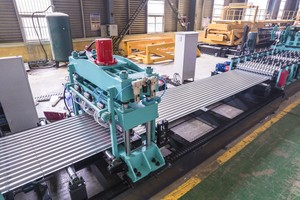


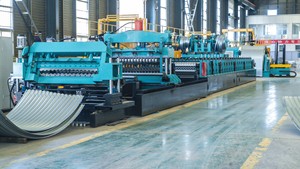









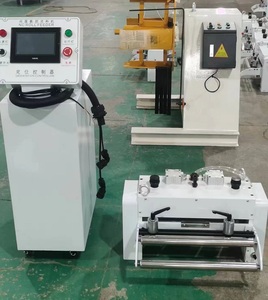

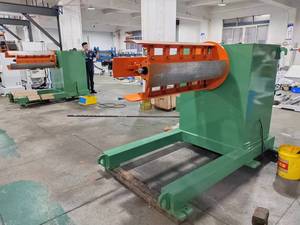
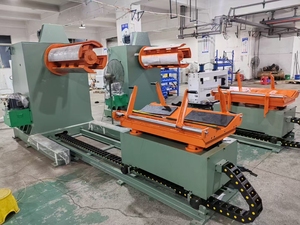


A coil forming machine is a piece of equipment that makes coils by rolling or bending a material around a central axis. There are different types of coil forming machines, each serving a unique purpose.
This machine is used to form metal wires into a variety of spring shapes. It can coil springs with different shapes, such as compression springs, extension springs, and torsion springs. The spring coiler machine works by feeding the wire into the machine, then rotating a mandrel around the wire to form the desired spring shape. Finally, a cutting mechanism is used to cut the coiled wire to the required length. This machine is often used in industries such as automotive, furniture, and construction.
This machine is used to precisely wind copper or aluminum wires around a magnetic core to create transformer coils. The transformer coil winding machine is equipped with programmable controls, tensioning systems, and wire guides, which can ensure the uniformity and accuracy of the winding process. This kind of coil forming machine is widely used in the manufacturing of electrical transformers, inductors, and other electromagnetic components.
The stator coil winding machine is designed to wind coils onto a stator core, and it is used in the production of electric motors, generators, and other electromagnetic devices. Similar to the transformer coil winding machine, the stator coil winding machine is also equipped with programmable controls, tensioning systems, and wire guides. This ensures accurate and consistent winding of the coils.
An automatic coil winding machine is a machine that winds wire coils on a bobbin, core, or form automatically. It can be used for a variety of applications that require the precise winding of coils, such as inductors, transformers, solenoids, and more. The automatic coil winding machine is constructed with an automated wire feed system, wire tensioning mechanism, and programmable controls. These features enable it to achieve precise control over parameters such as the number of turns, winding speed, and layering, yielding consistent and high-quality coils. The machine can also improve the efficiency of the winding process, by reducing the need for manual labor.
The specifications of the coil winding machine and the coil former machine vary depending on the manufacturer and the model. Here are some common features and specifications for the machine.
Machines need regular maintenance to ensure they operate optimally and last long. Routine cleaning is essential to keep the machine in good condition. The machine should be lubricated to reduce wear and tear on the moving parts. Lubricating the machine also helps reduce the friction and heat generated during the operation. The operator should inspect the machine regularly to identify potential problems early. If the machine has electrical components, the operator should check for damage and loose connections. Electrical components should be inspected by a qualified electrician. It is important to follow the manufacturer's maintenance instructions for the specific model being used.
Coil forming machines can be used in various industries and applications. A few of them are discussed below.
Coil forming machines are widely used in the electrical appliance and automotive industries to make induction coils, which are essential components of transformers, relays, and other electrical devices. In addition, coil forming machines can be used in the automotive industry to produce coils for automotive ignition systems and sensors, among other components. These coils are made by winding magnetic wire around a core, and they help to transform or transfer electrical signals.
Coil forming machines are also used in the furniture industry to make coils for sofas, mattresses, and other furniture pieces. These coils offer support and resilience, enhancing the comfort and durability of the furniture. In the case of sofas, the coil forming machine makes a series of zigzag wires that are connected by small helical wires laced through the coils. This is done to secure the position of the coils within the sofa. In the case of mattresses, the coils are typically innerspring mattress coils, which provide structural support and help distribute weight evenly across the mattress. They also facilitate air circulation, which helps regulate temperature during sleep.
In the construction and infrastructure industries, coil forming machines can be used to make helical reinforcement coils for concrete structures. These coils are often used to strengthen and reinforce concrete pillars, beams, and other structural elements. They improve the structural integrity of the concrete by preventing cracking and enhancing its ability to withstand tension and compression forces. Also, coil forming machines can be used to make pre-stressed concrete coils, which are commonly used in bridges, dams, and other infrastructure projects that require strong and durable concrete components.
Coil forming machines have a wide range of applications in the manufacturing industry. They can be used to make various types of springs, such as compression springs, extension springs, and torsion springs. These springs are used in different products and equipment, including automotive components, electronic devices, and machinery, among others. Additionally, coil forming machines can be used to make wire forms and other custom wire products used in manufacturing processes and assembly lines. These include parts, such as brackets, clips, and connectors, among others.
Some tips and guidelines for choosing the right coil forming machine are as follows:
Q1: What is the difference between a CNC spring forming machine and a traditional one?
A1: The traditional spring forming machine operates manually or semi-automatically, which requires operators to input parameters and handle the processes. The CNC spring forming machine, equipped with control systems, can achieve automatic production and be programmed for different coil types, sizes, and production requirements.
Q2: Can the coil forming machine produce custom springs?
A2: Yes. Many coil forming machines are programmable, which allows them to produce custom springs based on specific designs and requirements. However, it is necessary to consult manufacturers or suppliers to confirm whether the machine can meet the exact specifications.
Q3: What are the main components of a coil forming machine?
A3: The coil forming machine typically consists of a coil reel for feeding wire, a straightening unit to prepare the wire, a cutting mechanism to trim the wire to the desired length, a forming tool or die to shape the coil, and a coiling head to wind the coil with precision.
Q4: What safety precautions need to be taken when operating a spring coil forming machine?
A4: It is important to wear appropriate personal protective equipment, such as safety glasses, gloves, and ear protection. Operators should ensure the machine is properly grounded and follow the relevant safety guidelines and instructions provided by the manufacturer.